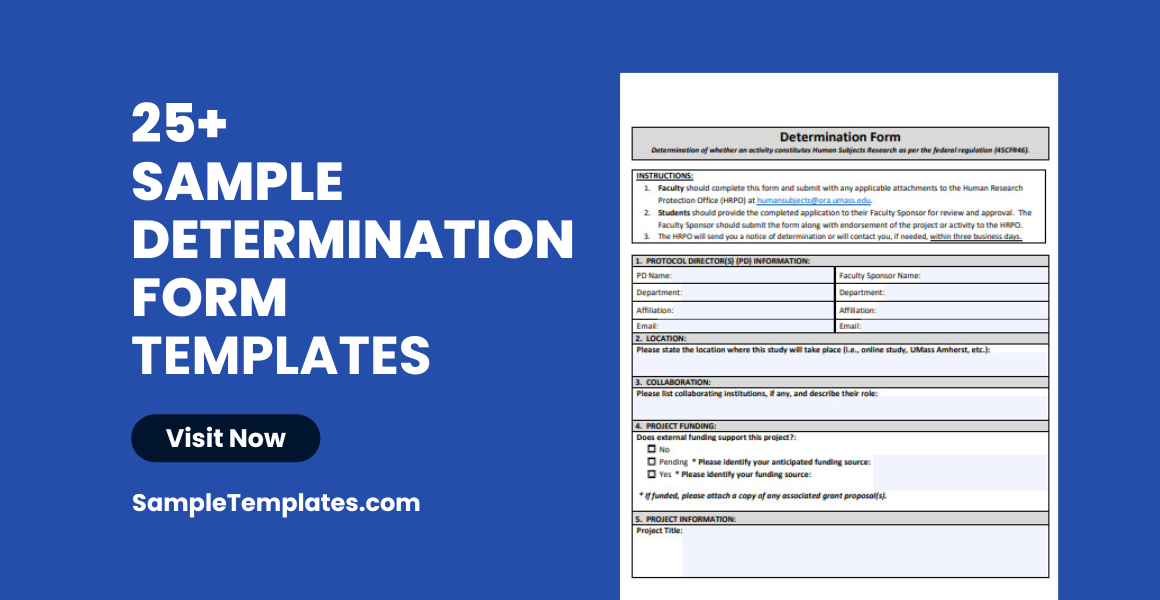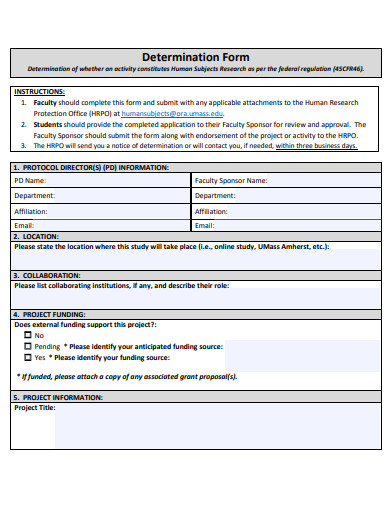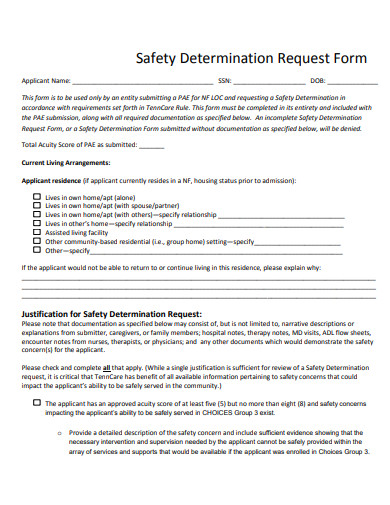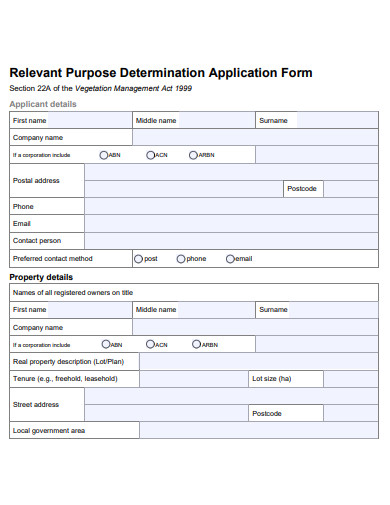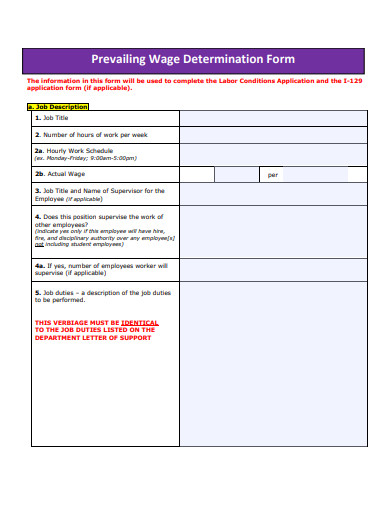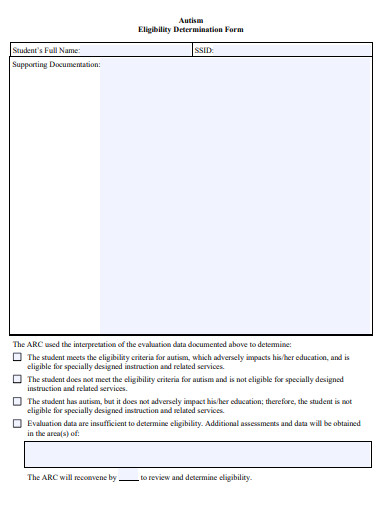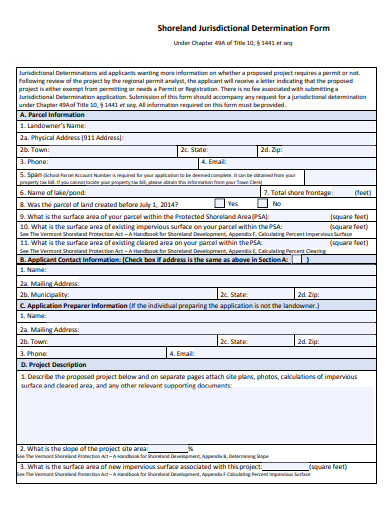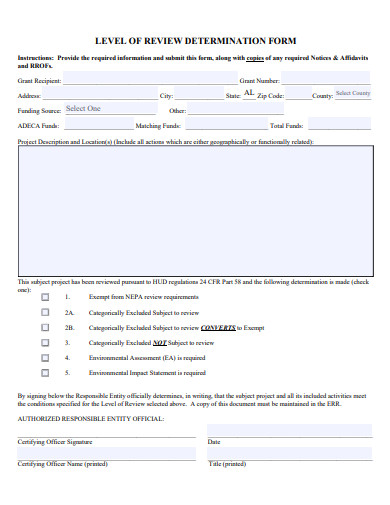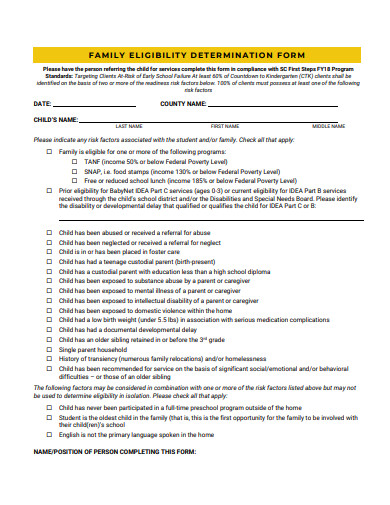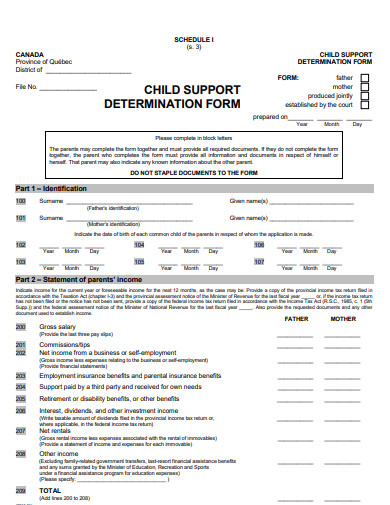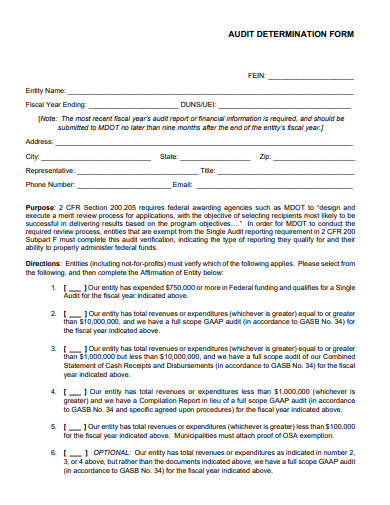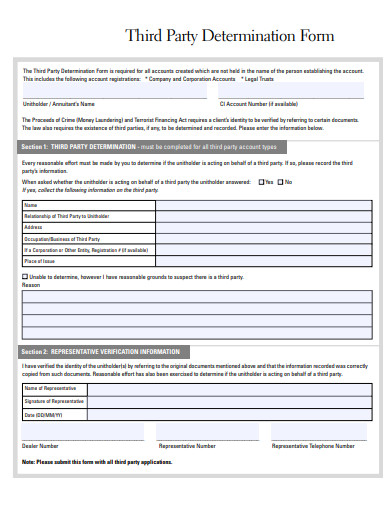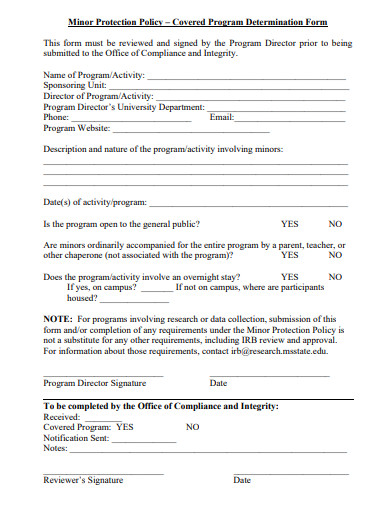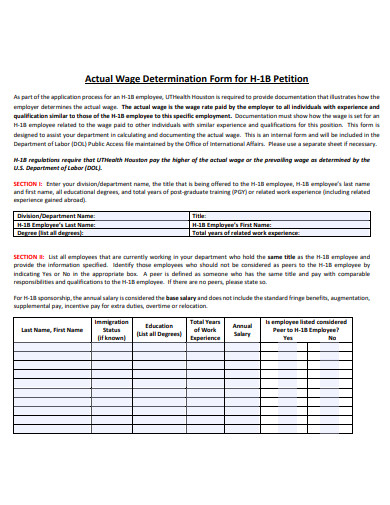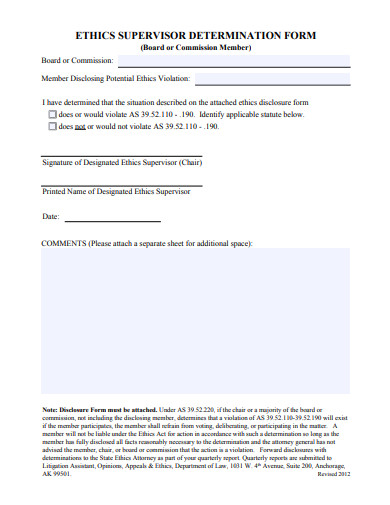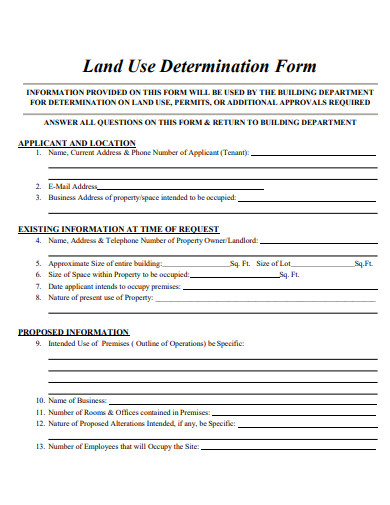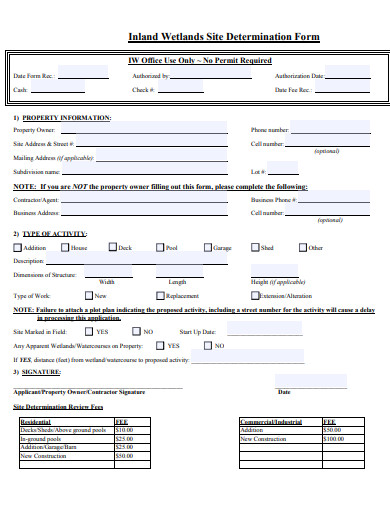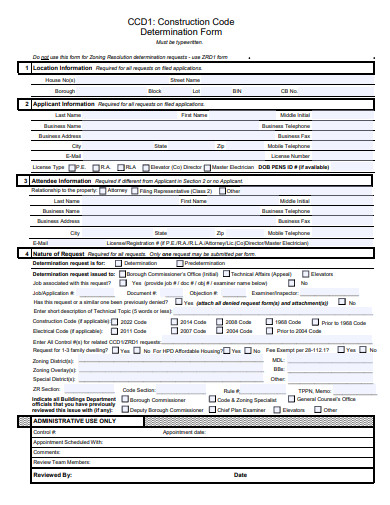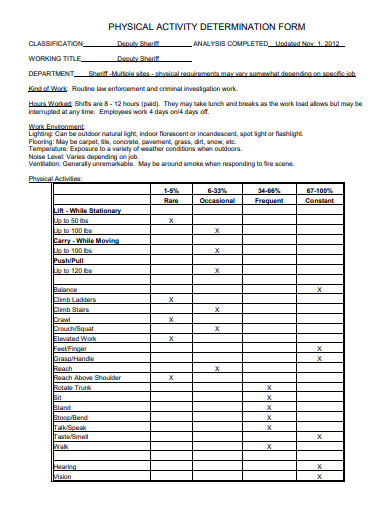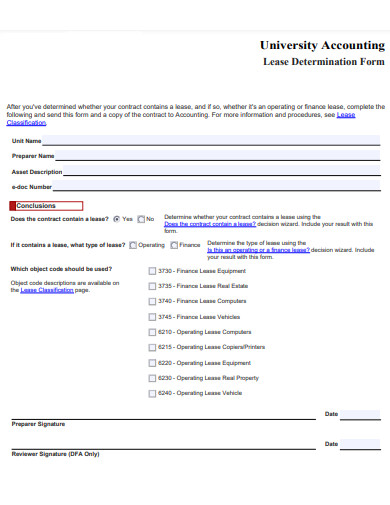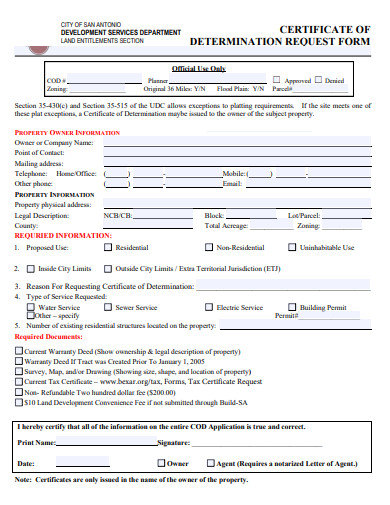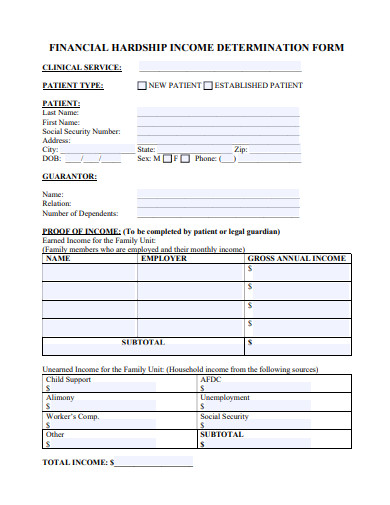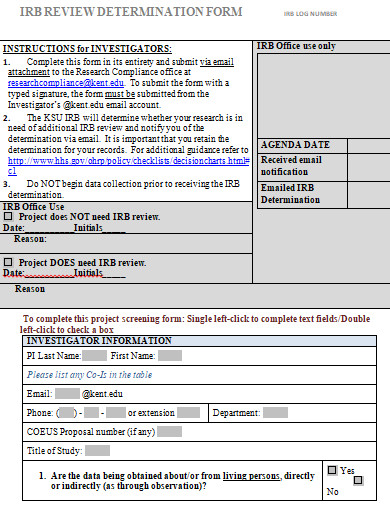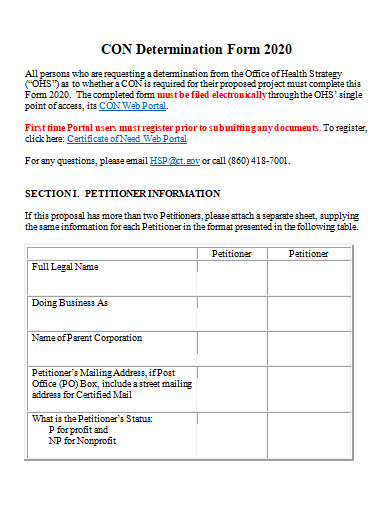In the dynamic realm of decision-making and goal setting, the ‘Determination Form’ stands as a cornerstone tool. Employed by businesses, educational institutions, and personal growth enthusiasts alike, this sample form aids in streamlining objectives and setting a clear path forward. By consolidating intentions and desired outcomes, a well-crafted Determination Form acts as a beacon, guiding individuals and teams toward their aspirations. Explore its intricacies, design, and transformative power in our detailed guide.
25+ Determination Form Samples
1. Sample Determination Form Template
2. Sample Safety Determination Request Form Template
3. Sample Independent Estimate Determination Form Template
4. Sample Relevant Purpose Determination Application Form
5. Sample Prevailing Wage Determination Form Template
6. Sample Eligibility Determination Form Template
What is Determination Form?
The Essence of Determination Form
Determination, in its core essence, refers to the steadfastness of purpose and the resolution to achieve a particular goal, irrespective of the hurdles that come in the way. When we talk about a “Determination Form,” it could refer to a tangible process documentation or symbolic representation of one’s commitment or resolve towards a specific goal or task. This article delves deeper into the concept, its implications, and its applications in various spheres of life.
Origins and Conceptual Understanding
- Historical Precedence Historically, determination has been a valued trait, celebrated in legends, folklore, and real-life heroes. The need to design document or formalize this determination led to the idea of a “determination form.”
- Modern-day Interpretation In today’s context, a determination form can be seen as a tool to reaffirm one’s commitment. It can range from a personal goal-setting worksheet to a formal contractual document in a professional setting.
Components of a Determination Form
- Clear Objectives The form should begin by elucidating clear, concise sample objectives. What does one hope to achieve? The clearer this is, the more effective the form.
- Action Plan This section outlines the steps needed to reach the objective. It’s a roadmap of sorts, guiding the determined soul towards its goal.
- Potential Challenges Foreseeing challenges and preparing for them strengthens resolve. This section identifies potential roadblocks and strategizes ways to overcome them.
- Monitoring and Feedback A provision to regularly check the progress and recalibrate actions if necessary. It’s the sample feedback mechanism that keeps one on track.
Importance in Different Spheres
- Personal Development Personal goal setting often requires determination. A determination form can serve as a physical reminder of one’s commitments, helping to stay on track.
- Professional Environment In business or work settings, determination forms can translate into performance contracts or goal-setting documents, ensuring accountability.
- Educational Institutions Students can use such forms to set academic goals, track their progress, and remain focused throughout the academic term.
Real-Life Applications
- Health and Fitness Consider someone aiming to lose weight or train for a marathon. A determination form can help sample outline their fitness goals, track dietary habits, and monitor exercise routines.
- Financial Planning Those aiming for financial goals, like saving for a house or retiring early, can utilize determination forms to set savings targets, track expenses, and monitor investments.
- Skill Acquisition Picking up a new skill, like a musical instrument or a language, requires consistency and determination. The form can guide the learning process, track milestones, and celebrate achievements.
Why is Determination Form Necessary?
If we’re discussing a hypothetical or general “Determination Form,” the necessity of such a form could be based on several reasons:
- Documentation and Record Keeping: A Determination Form serves as a formal record of decisions, sample assessments, or evaluations. This can be useful for future reference or for maintaining a paper trail.
- Clarity and Transparency: Having a documented form can provide clarity regarding the criteria or reasons behind a specific determination, ensuring that all stakeholders understand the basis of a decision.
- Consistency: Using a standardized form ensures that determinations are made consistently across similar situations or cases.
- Accountability: A documented determination can establish accountability. If any issues arise later, it’s easier to trace back to the specific determination and the individuals involved.
- Regulatory and Compliance Needs: In certain contexts (e.g., legal, medical, or academic research), a Determination Form might be a requirement for regulatory or ethical compliance.
- Communication: Such forms can serve as a tool to communicate decisions to relevant parties, ensuring everyone is informed.
Who is authorized to sign a Determination Form?
The individual or entity authorized to sign a Determination Form largely depends on the context in which the form is being used and the sample policies of the organization or institution that employs it. Here are some general scenarios and who might be authorized in those contexts:
- Research Institutions: If the Determination Form relates to human subject research, typically a representative from the Institutional Review Board (IRB) or an equivalent ethics committee might be authorized to sign.
- Business or Corporate Setting: In a company, the authority to sign might rest with department heads, managers, or other high-ranking officials depending on the nature of the determination. For instance, financial determinations might be signed off by a CFO or financial manager.
- Government Agencies: Depending on the agency and the nature of the determination, an agency director, department head, or designated representative might be authorized to sign.
- Educational Institutions: If the Determination Form relates to academic decisions or policies, a dean, department chair, or other administrative official might have the authority.
- Legal Context: In legal matters, an attorney, judge, or designated legal representative might be the one authorized depending on the specifics of the determination.
- Medical or Healthcare: If the determination pertains to patient care, treatment decisions, or similar matters, it might be a physician, head nurse, or healthcare administrator who is authorized. You can also see more templates like Superintendent Form Samples.
Obtaining a Determination Form
Obtaining a Determination Form depends on the specific context and purpose for which you need it. Here are general steps you might consider:
1. Determine the Specific Type: First, identify the exact nature of the Determination Form you need. Is it for research purposes, business decisions, legal matters, or something else?
2. Institutional or Organizational Sources:
- If you’re part of an organization, institution, or company, they might have standardized Determination Forms or templates in place. Check with the relevant department, such as Human Resources, Administration, or Research.
- Universities or research institutions typically have forms available through their Institutional Review Board (IRB) or equivalent body for research purposes.
3. Online Templates:
- There are many online platforms that offer templates for various types of forms, including Determination Forms. Websites like JotForm, Formstack, or even template sections in platforms like Microsoft Office or Google Docs might have generic forms you can customize.
- Be cautious about using online templates. Ensure they’re appropriate for your needs and are compliant with any relevant regulations or standards.
4. Legal or Regulatory Bodies:
For matters that are regulatory or legal in nature, you might need to approach specific government or legal bodies. For instance, if you need a form related to a legal determination, you might consult a local courthouse or a legal professional.
5. Create Your Own:
If you can’t find a form that meets your needs, you can create your own. If you choose this route, especially for crucial determinations, consider consulting with professionals in the relevant field to ensure it covers all necessary details.
6. Consult with Professionals:
If you’re unsure about the right form or the process, consider consulting with professionals. This could be legal counsel, academic advisors, business consultants, or other experts related to your specific need.
7. Sample Jurisdictional Determination Form Template
8. Sample Level of Review Determination Form Template
9. Sample Family Eligibility Determination Form Template
10. Sample Child Support Determination Form Template
11. Sample Audit Determination Form Template
12. Sample Third Party Determination Form Template
13. Sample Covered Program Determination Form Template
14. Sample Actual Wage Determination Form Template
15. Sample Ethics Supervisor Determination Form Template
16. Sample Land Use Determination Form Template
17. Sample Site Determination Form Template
18. Sample Construction Code Determination Form Template
19. Sample Physical Activity Determination Form Template
20. Sample Amended Petition Determination Form Template
21. Sample Lease Determination Form Template
22. Sample Certificate of Determination Request Form
23. Sample Provider Determination Form Template
24. Sample Financial Hardship Income Determination Form
25. Sample Review Determination Form Template
26. Sample Determination Form in DOC
How do you Create a Determination Form?
Creating a determination form can be instrumental in various contexts, whether for internal assessments, eligibility evaluations, or other specific criteria-based decisions. Such a form ensures a systematic and unbiased approach to making determinations. You can also see more templates like Management Form Samples. Here’s a guide to crafting one in five straightforward steps.
Step 1: Define the Purpose
Before diving into the design, you must first define the form’s primary objective. What kind of determination are you looking to make? Is it for employment eligibility, financial assistance, project approval, or something else? Clearly defining the purpose will help in identifying what specific information is needed from the respondent and how to structure the subsequent steps.
Step 2: List Essential Criteria
Based on the purpose, list out all the vital criteria that will guide the determination process. These are the benchmarks or standards the respondent must meet for a positive determination. For instance, if the form is for a scholarship application, the criteria might include academic performance, extracurricular activities, and financial need. Make sure the criteria are specific, measurable, and relevant to the determination’s purpose.
Step 3: Design the Form Layout
With your criteria in hand, you can start designing the form’s layout. The design should be intuitive and user-friendly. Start with a section for personal details, followed by sections for each criterion. Depending on the type of determination, you can use multiple-choice questions, checkboxes, text boxes for elaborate answers, or numerical fields. Also, consider using a logical flow, guiding the respondent from general questions to more specific ones.
Step 4: Incorporate Verification Processes
To ensure authenticity and accuracy of the information provided, it’s essential to have a verification process in place. This can be in the form of document uploads (like proof of income or certificates), references, or even third-party verification methods. Clearly specify what supporting documents are required and provide an easy way for respondents to attach or provide these.
Step 5: Test and Refine
Before rolling out the determination form, it’s crucial to test it. Have a few individuals from your organization or target group fill it out to ensure it’s intuitive and captures all necessary information. Collect feedback regarding any ambiguities, technical issues, or redundancies. Use this feedback to refine the form, ensuring it’s efficient and effective in achieving its purpose.
What is the Human Subject Research Determination Form?
The Human Subject Research Determination Form is a document used to determine if a specific research project involving people qualifies as “human subject research” and therefore needs review and approval by an Institutional Review Board (IRB) to ensure ethical treatment of participants.
In Conclusion, the Determination Form, while seemingly a simple piece of documentation, serves a pivotal role in ensuring clarity, consistency, and commitment in various contexts. Whether it’s research, legal proceedings, business decisions, or personal goal-setting, this form provides a structured framework for articulating determinations, making informed decisions, and upholding accountability. As we navigate an era where transparency and documentation are paramount, the significance of the Determination Form becomes ever more apparent. It acts as a bridge, converting intentions into tangible actions, ensuring that objectives are not only set but also rigorously followed through. In essence, the Determination Form is not just about recording a decision; it’s about championing a commitment to purpose and direction. You can also see more templates like Analysis Form Samples.
Related Posts
Sample Sworn Affidavit Forms
Vehicle Inspection Forms Samples & Templates
Sample Employee Advance Forms
Sample Child Travel Consent Forms
Sample Testimonial Request Forms
Sample Employee Details Forms
Sample Divorce Forms
Sample Attestation Forms
Employee Performance Appraisal Form Templates
FREE 9+ Sample Presentation Evaluation Forms in MS Word
FREE 10+ School Admission Form Samples & Templates in MS Word | PDF
FREE 30+ Patient Consent Form Samples in PDF | MS Word
FREE 10+ Sample Sign Off Form Templates in PDF | MS Word
FREE 11+ Sample Medical Consultation Forms in PDF | MS Word
FREE 8+ Sample Donation Forms in PDF | MS Word
